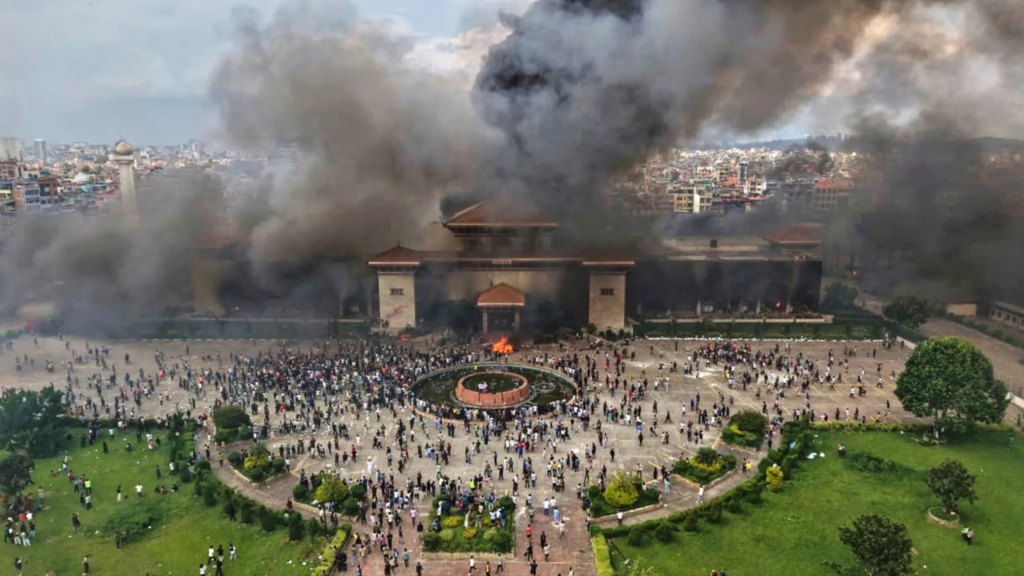Putin–Trump Alaska Summit: Symbolism, Strategy, and the Future of Diplomacy
The Alaska summit between Trump and Putin provided symbolism over substance, raising concerns for Ukraine’s sovereignty, Europe’s security, and U.S. credibility on the global stage.
On 15 August 2025, U.S. President Donald Trump and Russian President Vladimir Putin met at Joint Base Elmendorf–Richardson in Anchorage, Alaska. This marked their first direct encounter since Russia’s full-scale invasion of Ukraine in 2022, and the meeting attracted global attention for both its setting and its outcome. While no ceasefire was achieved, the summit revealed much about the role of symbolism in diplomacy, the fragility of alliances, and the shifting dynamics of international politics. A granular analysis suggests the event should be interpreted not as a substantive negotiation for peace in Ukraine, but rather as a high-stakes performative act. This exercise in diplomatic theatre yielded negligible policy outcomes while generating significant negative externalities for the security architecture of Europe, the sovereignty of Ukraine, and the perceived credibility of the United States as a strategic anchor.
Diplomacy as Performance: Stagecraft versus Statecraft
International relations scholars have long recognized that diplomacy is not only about substance but also about performance. Symbolic actions, rituals, and optics help shape perceptions of legitimacy, credibility, and hierarchy. The Alaska summit highlighted this dynamic vividly. The use of red carpets, military flyovers and a tightly choreographed three-on-three format transformed the meeting into a spectacle that elevated Putin’s image internationally (AP, 2025). For a leader who had faced years of Western attempts at isolation, the very act of standing alongside the U.S. president on American soil was a symbolic victory.
President Trump’s approach at the summit served to amplify its theatrical quality. The American delegation included real estate executive Steve Witkoff, an individual without a formal background in foreign policy, or statecraft; which illustrates the personalised and transactional nature of their diplomacy. (Washington Post, 2025). During the joint press appearances, Trump adopted what appeared to be a more subdued tone while Putin projected confidence, creating the impression of imbalance. This dynamic reflected what scholars such as Bially Mattern describe as the “performative dimension” of power: how leaders use symbols and gestures to claim authority in the international arena.
The most significant shift was the rhetorical change in U.S. policy. Before the meeting, Washington insisted that a ceasefire was a crucial initial step. However, after Alaska, Trump echoed Putin’s call for a “comprehensive peace agreement,” which implied territorial concessions from Ukraine (Reuters, 2025). The Financial Times criticized this approach as “inept” because the U.S. softened its stance without demanding reciprocal concessions (Financial Times, 2025). For Ukraine, Zelensky’s immediate rejection of such terms underscored that sovereignty could not be traded for diplomatic convenience (Guardian, 2025). Here, the stark contrast between stagecraft and statecraft was evident: the appearance of dialogue overshadowed the lack of substantive progress.
Strategic Implications: Realism, Liberalism, and Alliance Politics
Beyond its symbolic significance, the Alaska summit had profound strategic implications. A realist analysis reveals the summit’s core strategic function: a platform to assert status and advance national self-interests that are absent of tangible agreements. For the Kremlin, the meeting validated President Putin’s theory of victory through attrition, by prolonging the conflict and exploiting political divisions in the West. By protracting the conflict, Moscow successfully engineered a forum conducive to aligning the U.S. President’s rhetoric with its preferred peace formula.
The event highlighted that power in international politics transcends military capability to include narrative control and the power to shape conflicts on one’s own terms. While President Trump secured the image of statesmanship, he failed to secure tangible progress and unsettled allies, raising questions about American credibility as the anchor of the liberal international order. From a liberal institutionalist perspective, the summit highlighted the risks of bypassing multilateral frameworks. By engaging bilaterally with Putin, Trump marginalized NATO and the European Union, reinforcing concerns that American commitments were conditional and transactional (ECFR, 2025).
For Ukraine, the implications were deeply troubling. The suggestion of territorial concessions risked normalizing the idea that sovereignty is negotiable when great powers consider it necessary. Zelensky’s rejection was not only a defense of national integrity but also a statement of principle for the rules-based order. Constructivist scholars might argue that this moment underscored how norms of sovereignty remain contested in times of crisis.
Europe, meanwhile, drew its own lessons. The European Council on Foreign Relations (ECFR) labelled the summit as “Bearing bad news” for European security, highlighting the fragility of transatlantic unity. For policymakers in Berlin and Paris, the summit clearly displayed the urgency of “strategic autonomy,” emphasizing the need for Europe to bolster its own defense capabilities rather than relying on Washington. Consequently, the summit catalyzed discussions on the future of NATO, European integration, and the balance of power in Eurasia.
To conclude, the Alaska summit between President Trump and President Putin did not bring about a turning point in the Ukraine war or establish a peace framework. Instead, it highlighted the interplay between appearance and substance in diplomacy, emphasizing how performance can influence global perceptions even in the absence of concrete agreements. For Russia, the meeting restored its legitimacy; for the United States, it raised doubts about its credibility; for Ukraine, it underscored the risks associated with great-power bargaining; and for Europe, it highlighted the fragility of transatlantic solidarity.
Ultimately, the summit reflects broader themes in international relations: the realist pursuit of power and status, the liberal concern for institutions and credibility, and the constructivist understanding that norms and perceptions hold significant importance. Alaska demonstrated that stagecraft can temporarily replace statecraft, but it cannot guarantee lasting peace.
Bibliography
- AP (2025) Summit puts Putin back on the global stage and Trump echoes a Kremlin position. Associated Press, 16 August.
- Financial Times (2025) An incompetent way to pursue peace in Ukraine. Financial Times, 16 August. Available here.
- Guardian (2025) No Ukraine ceasefire but a PR victory for Putin: key takeaways from Trump’s Alaska summit. The Guardian, 16 August. Available here.
- Reuters (2025) Trump adopts Putin’s preference for peace plan after Alaska meeting. Reuters, 16 August. Available here.
- Washington Post (2025) Trump’s unorthodox team raises questions at Alaska summit. The Washington Post, 16 August. Available here.
- ECFR (2025) Bering bad news: Trump, Putin and European lessons from the Alaska summit. European Council on Foreign Relations, 17 August. Available here.



